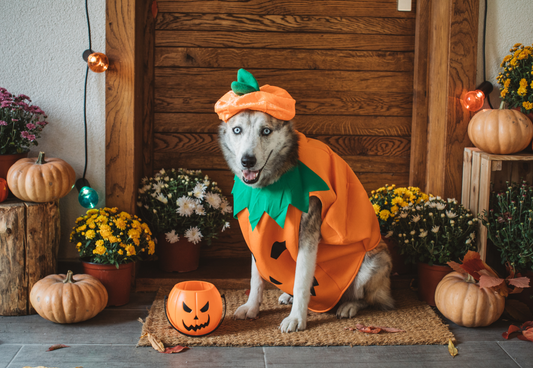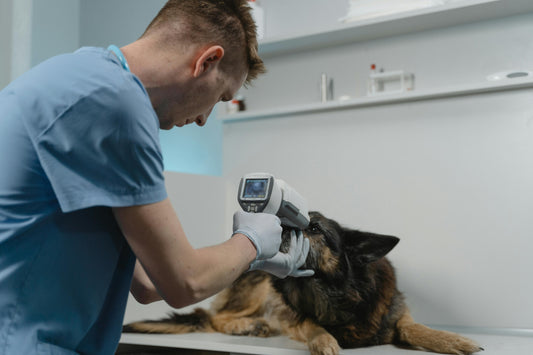If your cat suddenly pulls away from food, flinches when touched near the mouth, or starts drooling for no obvious reason, something might be going on below the surface. One common cause of mouth pain in cats is a condition called stomatitis.
Stomatitis in cats is more than just sore gums. Stomatitis can affect your cat’s whole mouth and turn everyday things like eating and grooming into a painful ordeal. Here's what it is, what to watch out for, and how to help your cat feel better.
What Is Stomatitis In Cats?
Stomatitis is a strong inflammatory reaction in a cat’s mouth. It can involve the gums, tongue, cheeks, roof of the mouth, and even the back of the throat. You might hear vets call it feline stomatitis, chronic gingivostomatitis, or just stomatitis cat. Either way, it’s incredibly uncomfortable for your pet.
Some cats react so strongly to dental plaque or bacteria that their body starts attacking healthy tissue too. That’s why this condition often seems to come out of nowhere and can escalate fast.
What Causes Stomatitis In Cats?
Experts still don’t fully agree on what causes stomatitis in cats, but the leading theory is an exaggerated immune response. In simple terms, your cat’s immune system overreacts to all harmful bacteria.
Things that can trigger or worsen cat stomatitis include:
- Plaque buildup along the gumline
- Chronic cat gum disease
- Viral infections like feline calicivirus or herpesvirus
- Autoimmune or inflammatory conditions
- Past dental disease or poor oral hygiene
This condition is sometimes seen alongside other dental problems like cat mouth disease and cat tooth resorption.
What Symptoms Should You Look For?
Cats with stomatitis are usually in quite a bit of pain, so you’ll probably notice a change in behaviour before you see the problem inside their mouth.
Look for:
- Red, swollen, or bleeding gums
- Thick drool, sometimes with blood
- Eating slower or dropping food
- Hiding more than usual
- Bad breath (worse than normal)
- Weight loss or skipped meals
- Pulling away from pats or touch near the face
Some cats even start hissing when they eat, not because they’re cranky, but because it hurts. If your cat avoids dry biscuits or only chews on one side, it’s worth a closer look.

How Is It Diagnosed?
Your vet will start with a visual check of your cat’s mouth. In many cases, they’ll recommend blood tests to rule out infections and a full dental exam under anaesthetic to check for related issues, such as gingivitis. For more information about this condition, read our article: Is gingivitis contagious in cats?
Dental X-rays can also reveal hidden damage below the gumline, including resorption or bone loss.
What Causes Stomatitis In Cats To Worsen?
Untreated dental plaque is a big one. Even tiny bits of bacteria can trigger a painful flare-up. If your cat’s teeth are already compromised, this condition may come back again and again.
It can also get worse if you delay treatment. What starts as mild gum inflammation can quickly turn into widespread mouth ulcers, infections, and difficulty eating.
How Do Vets Treat Stomatitis?
There’s no one-size-fits-all answer, but the goal is always the same: reduce pain, control inflammation, and prevent it from returning.
Common treatments include:
- Antibiotics or anti-inflammatories
- Pain relief medications
- Corticosteroids or immune-modulating drugs
- Tooth extractions (partial or full-mouth in severe cases)
As intense as tooth removal sounds, many cats feel much better afterwards. Once the source of pain is gone, they often bounce back quickly.
How To Care For A Cat With Stomatitis At Home
Once diagnosed, ongoing care is key to keeping your cat comfortable. Some tips that help:
- Offer soft food that’s easy to eat, choose the highest quality wet food you can find that is complete and balanced
- Use a vet-approved oral rinse to reduce bacteria
- Try dental wipes or gel if brushing isn’t possible
- Stick to regular vet visits to catch flare-ups early
Your cat might also benefit from calming routines, like gentle brushing or massage sessions, to keep stress low.
Why It’s Worth Catching Early
Stomatitis can escalate quickly if it goes unnoticed. The good news? Research shows that about 90% of cats find complete relief after partial or full-mouth tooth extractions. Catch it early, get the right treatment, and your cat has every chance of enjoying a happy, healthy life.
The main thing is knowing what to look for and acting on it. Don’t wait for your cat to stop eating entirely. If something seems off, it probably is.




